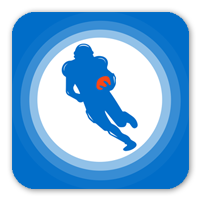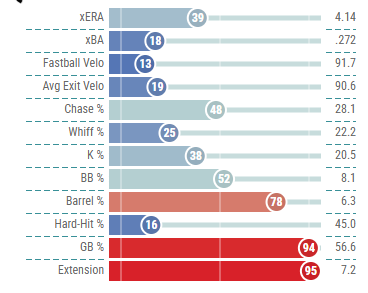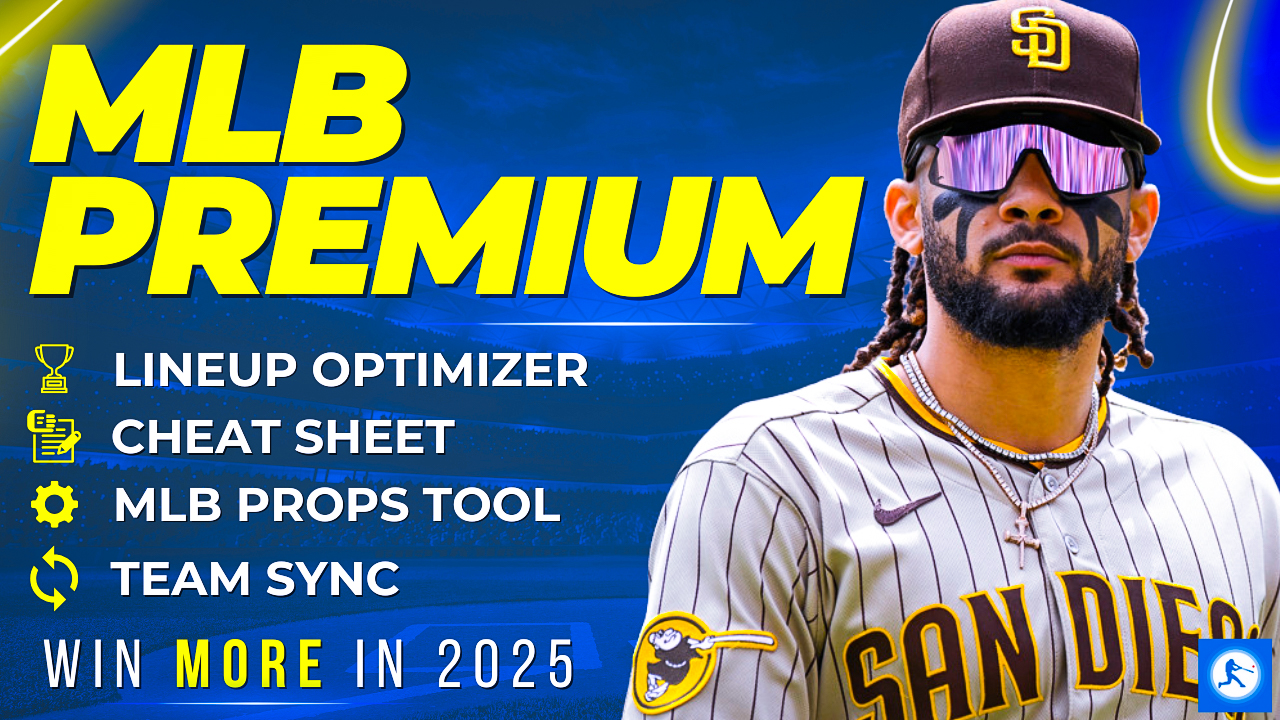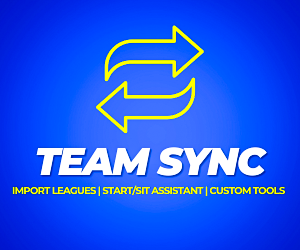Are David Peterson and Jacob Misiorowski fantasy baseball sleepers, busts, or neither? Rick takes a deep dive into their 2025 fantasy baseball value.
All-Stars aren't a fantasy category, but it still feels great when your roster has more than your rivals. Granted, all All-Stars aren't equal for this purpose. If Aaron Judge didn't perform like an All-Star, his fantasy managers would likely be in trouble. Similarly, an All-Star first half doesn't necessarily translate to fantasy production in the second.
David Peterson has decent surface stats to go with his All-Star nod, but a lack of strikeouts and hidden struggles against right-handed batters (RHBs) suggest he should be a sell-high guy. Jacob Misiorowski's All-Star selection was controversial, considering he appeared in only five MLB games, and the Brewers are likely to severely limit his workload moving forward.
Let's take a closer look at what these arms might have to offer in the second half.
Be sure to check all of our fantasy baseball lineup tools and resources:- Fantasy baseball trade analyzer
- BvP matchups data (Batter vs. Pitcher)
- PvB matchups data (Pitcher vs. Batter)
- Who should I start? Fantasy baseball comparisons
- Daily MLB starting lineups
- Fantasy baseball closer depth charts
- Fantasy Baseball live scoreboard
- Fantasy baseball injury reports
David Peterson (SP, New York Mets)
67% Rostered
The 29-year-old Peterson is 6-4 with a 3.06 ERA in 109 innings pitched (IP) this season. He's inducing grounders at a 55.9 percent clip, and his .292 BABIP, 76 percent strand rate, and 9.1 percent HR/FB are all in the normal range. The Mets didn't need an All-Star with Francisco Lindor, Pete Alonso, and Edwin Diaz already representing the club, but he doesn't seem like the worst pick.
Unfortunately, a closer examination reveals several red flags. His 3.58 xFIP and 4.14 xERA suggest negative ERA regression. While Peterson offered strikeout upside earlier in his career, his current 20.5 percent K% and 8.1 percent BB% are simply not All-Star worthy.
Peterson's arsenal doesn't offer much strikeout upside, either. He has a five-pitch mix: sinker, fastball, slider, change, and curve. Peterson's sinker gets him ahead in the count with a 63.1 percent Zone% and induces grounders with its 67.6 percent GB%, but its 3.1 percent swinging strike percentage (SwStr%) offers zero strikeout potential.
Peterson's fastball is better with a nine percent SwStr%, but its 50 percent Zone% is too low for a primary offering. His slider is his best pitch with an 18.9 percent SwStr%, 45.4 percent Zone%, and 39.3 percent chase rate, but it's only his third pitch by usage rate.
Peterson rounds out his repertoire with a changeup (9.7 percent SwStr%, 43.1 percent Zone%, 30.5 percent chase) and curve (12 percent SwStr%, 47.8 percent Zone%, 39.4 percent chase), but neither offers strikeouts for fantasy. Overall, it's a kitchen sink pitch mix befitting a No. 4 starter.
That might be okay if Peterson excelled at managing contact, but he doesn't. Check out his Statcast metrics:
Peterson's GB% and Barrel% rank well, but opposing hitters generally hit the ball hard. His .240 batting average against (BAA) should be more than 30 points higher, meaning that regression would turn his 1.24 WHIP into a fantasy issue. Strangely, all of Peterson's good fortune comes against RHB.
Righties have a .257 average and .329 slugging percentage against Peterson's sinker, but they deserve .306 and .398, respectively. They tattoo Peterson's fastball with a .318 average and .545 slugging, but deserve even more with a .359 xBA and .622 xSLG. Peterson's change has held RHBs to a .200 average and .273 SLG, but they've deserved marks of .260 and .342.
Peterson's slider is his best pitch against opposite-handed batters, which is strange in itself. Still, its .231 BAA and .333 slugging percentage are better than its .245 xBA and .406 xSLG. Finally, Peterson's curve has a .217 BAA and .283 slugging percentage against RHB but a .281 xBA and .389 xSLG. Literally every pitch has overperformed against RHB this season.
Even that could be sustainable if Peterson could expect help from his fielders, but he cannot. The Mets rank 22nd in Outs Above Average (OAA) at -8. Their infield (one OAA, 14th) ranks better than their outfield (-9 OAA, 24th), which is good for a groundball specialist like Peterson. Still, the infield alone is average at best, not good enough to support Peterson's overperformance.
The Mets are a contending team, and Peterson is generally permitted to pitch deep into games, so there are worse speculative win options on waivers. However, his workload could prove to be a detriment with his relative lack of strikeouts in K/9 and formats with an innings cap (effectively turning strikeouts into K/9). An elevated ERA over a high innings count is problematic, too.
Nobody wants to see Peterson pitch in the All-Star Game tonight, and you shouldn't want to see him on your fantasy roster, either. Sell this Chump now while his value is at its peak and his issues are buried in his peripherals.
Jacob Misiorowski (SP/RP, Milwaukee Brewers)
84% Rostered
Misiorowski is only 25 2/3 IP into his MLB career, but he's 4-1 with a 2.81 ERA, 2.60 xERA, and 3.13 xFIP. The 23-year-old has a 33.7 percent K% against an 11.2 percent BB% and has been heavily marketed by MLB, especially his marquee matchups against Paul Skenes and Clayton Kershaw.
Misiorowski's scouting report suggests fantasy upside, but also highlights significant risk as a reliever, rooted in control issues. Here's his FanGraphs scouting report:
Misiorowski's velocity sits elite with an unreal top end, and his curve and cutter are big-league ready as well. Unfortunately, his command is below average and isn't expected to become even MLB-average in the future. His write-up notes that Misiorowski's questionable control could make him a high-leverage reliever rather than a starter.
His MiLB.com scouting report tells a similar story:
His slider is his cutter, so this scouting report is more optimistic on all three of his pitches. However, his write-up notes that Misiorowski is "lanky" and "looks like all elbows and knees," making it difficult for him to repeat his delivery and throw strikes. Reliever risk remains a key concern.
Misiorowski's MiLB history is categorized by immense strikeout potential and persistent walk issues. He reached the high minor leagues with Double-A (Biloxi) last season, pitching to a 3.50 ERA and 3.81 xFIP in 79 2/3 IP. His 30.3 percent K% was excellent, though his 14.4 percent BB% was alarming. Hitters didn't do much when they made contact with a .257 BABIP and 11.1 percent HR/FB.
Misiorowski earned a promotion to Triple-A (Nashville) and a bullpen role to keep his innings down, pitching to a 2.55 ERA but 4.40 xFIP in 17 2/3 IP. His 31.4 percent K% and 14.3 percent BB% were virtual repeats of his Double-A rates, and hitters were even less productive on contact with an .118 BABIP and 9.1 percent HR/FB.
Misiorowski returned to Nashville to begin 2025 in a starting role, posting a 2.13 ERA and 3.71 xFIP in 63 1/3 IP. His 31.6 percent K% was great, while his 12.3 percent BB% was a slight improvement over 2024. Once again, opposing hitters managed little with a .248 BABIP and 8.9 percent HR/FB.
It's a small sample, but Misiorowski's 11.2 percent BB% as a Brewer is better than his mark at Triple-A. First-pitch strike percentage (F-Strike%) is one of the best predictors of BB%, and Misiorowski's 60.2 percent mark in the majors is much better than his 51 percent at Nashville this season. He may be figuring things out.
Misiorowski's repertoire also has the look of a strike thrower. His heater has a 57.9 percent Zone% and 12.6 percent SwStr%, allowing Misiorowski to get ahead and put hitters away. His slider/cutter acts as a second heater with a 63.5 percent Zone% and 10.4 percent SwStr%.
Misiorowski's curve has a 54.7 percent Zone%, and its 41.7 percent chase rate helps it generate an elite 22.6 percent SwStr%. He's also working on a change with a 31.6 percent Zone%, but he throws it less than five percent of the time, and batters chase it at an impressive 46.2 percent clip, generating a 21.1 percent SwStr%.
It seems like Misiorowski has addressed his biggest bugaboo, giving him elite fantasy upside as a huge strikeout arm on a contending team. The only question now is what kind of innings limit the Brewers have him on, and fantasy managers probably won't like the answer.
Misiorowski threw 71 1/3 IP in 2023 and 97 1/3 last season, just shy of a 35 percent increase year-over-year. If we assume the plan for this year is also about a 35 percent increase, that gives him a total of 130 IP. He's already thrown 89, meaning he has about 40 IP to go before Milwaukee shuts him down.
That's eight abbreviated five-inning starts, but he probably won't hit even that number. The Brewers have an 82.9 percent chance of making the playoffs, according to FanGraphs, and Milwaukee will want Misiorowski available in some capacity in October. If they save 15-20 innings for the postseason, we're looking at 20-25 IP for fantasy managers split across two and a half months.
You could argue that the Brewers have to "go for it" to make sure they get a playoff spot, but they probably won't. Between Logan Henderson, Nestor Cortes, Chad Patrick, and Tobias Myers, the team has four MLB-caliber starters who aren't currently in their rotation. Misiorowski could easily have a phantom IL stint without compromising October baseball in Milwaukee.
It's just not enough volume to live up to the hype, even if his ratios are elite for a contending team. Usage alone makes Misiorowski a Chump in 2025, though he should be excellent whenever he's allowed to pitch.
Download Our Free News & Alerts Mobile App
Like what you see? Download our updated fantasy baseball app for iPhone and Android with 24x7 player news, injury alerts, sleepers, prospects & more. All free!






 RADIO
RADIO



























